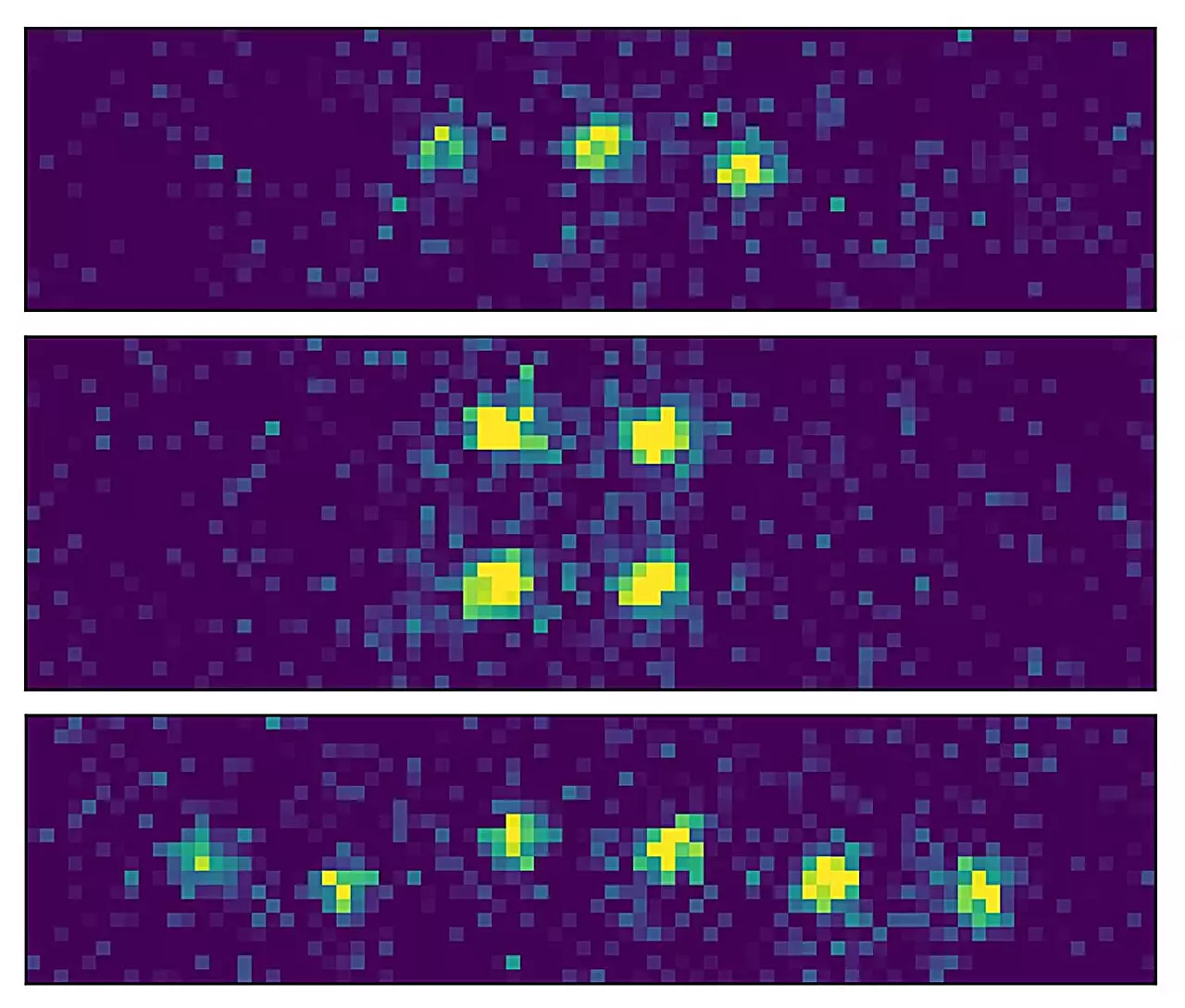Entanglement, a phenomenon famously dubbed “spooky action at a distance” by Albert Einstein, has surged to the forefront of modern physics, acting as the cornerstone of quantum information science. As we stand on the brink of a technological revolution, understanding and effectively harnessing entanglement has become essential for the advancement of quantum computing and the establishment of a future quantum internet. The complexity and sensitivity of entangled qubits pose significant challenges, particularly when attempting to connect stationary quantum bits with their dynamic counterparts—flying qubits like photons.
Recent groundbreaking work from a team led by Gerhard Rempe at the Max Planck Institute of Quantum Optics demonstrates an innovative approach to achieving entanglement with remarkable efficiency. This advance is not merely a scientific curiosity; it paves the way for practical applications in transmitting quantum information over expansive distances, embodying the potential of quantum networks that could shape our digital future.
The Art of Controlling Qubits
In their experiment, the researchers effectively manipulated qubits using optical tweezers, a technique that allows for precise positioning of atoms within a specialized resonator consisting of two nearly perfect mirrors. This configuration is crucial as it ensures optimal interaction between resting qubits and flying qubits, facilitating the transfer of information in a controlled manner. Remarkably, this technique has allowed the team to achieve nearly 100% efficiency in generating entanglement between atoms and photons.
Emanuele Distante, a pivotal figure in this research now at ICFO in Barcelona, highlighted two essential applications of their findings: the communication of quantum information across large distances and the interconnection of multiple qubits within a distributed quantum computing framework. The implications of this research are vast, particularly as it presents solutions to common challenges within quantum communication that have stalled progress.
The Multiplexing Marvel: Enhancing Quantum Communication
A crucial obstacle encountered in quantum networks lies in the successful transfer of information over long distances without losing coherence or integrity. The Garching team turned towards multiplexing—a technique familiar in classical communication technologies known for its robustness in data transmission. Effectively, multiplexing allows multiple parallel channels to relay information simultaneously, which significantly increases the likelihood of successful communication, even through noisy environments.
By adapting this established technique for quantum systems, the researchers have not only resolved issues associated with the loss of photons traveling through optical fibers but also have laid the groundwork for more secure and efficient quantum networks. This innovation is comparable to enhancing the reliability of radio signals in challenging conditions, emphasizing its importance as we approach the reality of a quantum internet.
Precision Engineering: The Role of Optical Tweezers
The ingenuity of the Garching team is evident in its development of optical tweezers capable of positioning rubidium atoms with exquisite precision within a confined resonator environment. With mirrors spaced just half a millimeter apart, the challenge of inserting and manipulating the atoms required a deft touch and meticulous engineering. Utilizing fine laser beams, researchers achieved the remarkable feat of arranging multiple atoms into a lattice configuration, thus allowing for parallel entanglement with flying qubits.
As the team successfully controlled the arrangement of up to six rubidium atoms and coupled them efficiently with individual photons, the implications for scaling this technique are substantial. They foresee a future where hundreds of atoms can be manipulated and entangled, potentially revolutionizing the scalability of quantum computers and networks. The intricate balance of technology and finesse demonstrated by the researchers is a testament to the progress being made in the field of quantum information science.
Charting the Path Towards Quantum Networks
While immediate applications for the current research may still rest within the realm of experimentation, the vision of interconnected quantum processors utilizing entangled qubits is one that inspires tremendous excitement. The Garching team’s findings promise not only to enhance our capabilities in quantum information transmission but also serve as a pivotal step in the pursuit of a comprehensive quantum computing framework.
The detailed understanding of how to position, manipulate, and entangle qubits provides a roadmap for future advancements, empowering scientists to navigate the complexities of quantum information systems. As quantum technology continues to evolve, the techniques pioneered at the Max Planck Institute illuminate a bright pathway toward realizing the full potential of quantum networks in our ever-expanding digital landscape. The journey of quantum science is frequently filled with complexities, but with persistent innovation, the future of quantum communication and computation appears increasingly attainable.


Leave a Reply